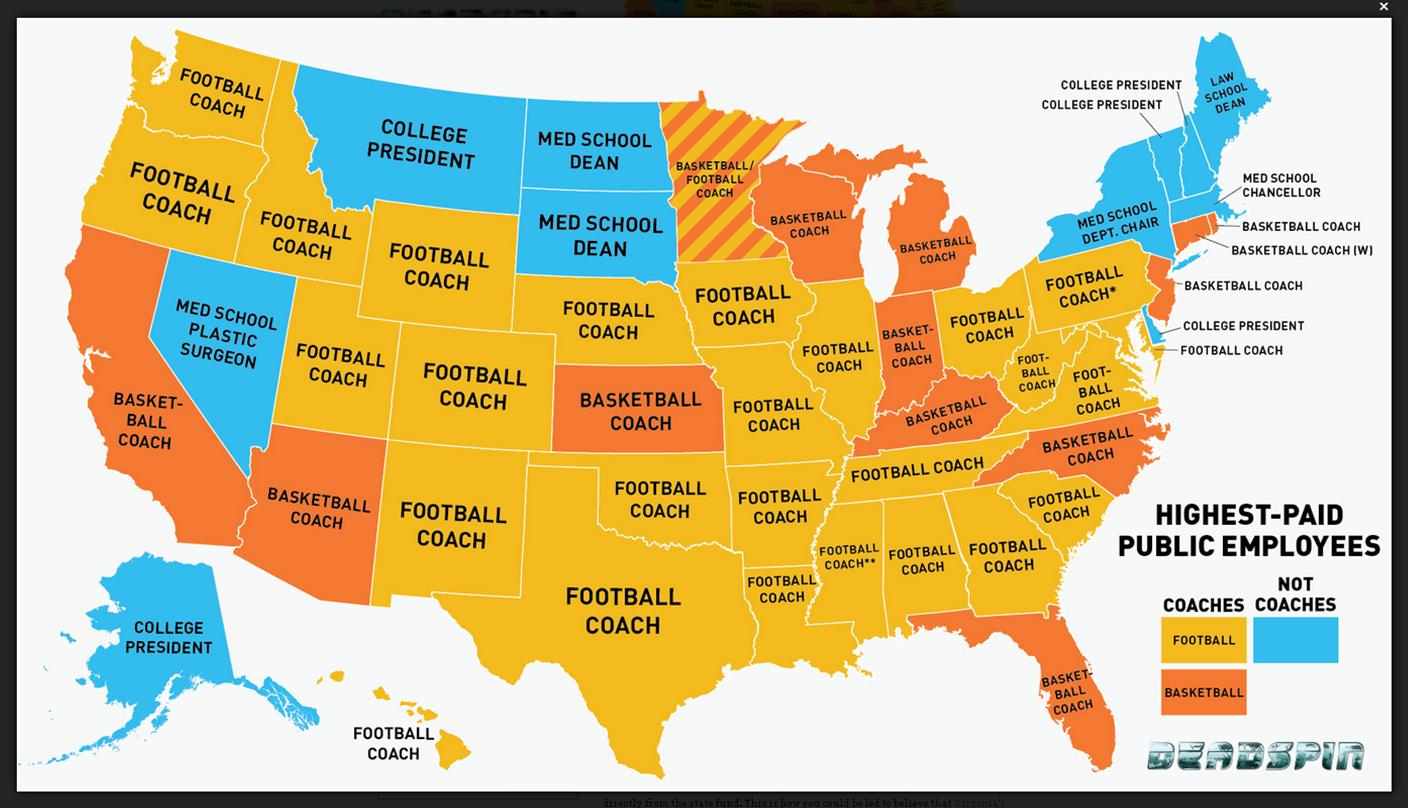College Coaches Are Highest Paid Public Employees in 40 of 50 States, Including CT
/
When UConn announced the hiring of Bob Diaco as new head football coach earlier this month few flinched at the compensation – a reported five-year $8 million contract. Diaco, who served on the Notre Dame coaching staff as the defensive coordinator for the past four years and the assistant head coach for the past two, was the 2012 winner of the Frank Broyles Award, given to the top assistant college football coach in the country and was the first Irish assistant to receive the prestigious award. He was a semifinalist for the award in 2011.
Earlier this year, the Yankee Institute for Public Policy compiled a list of the highest paid state employees, and three UConn coaches led the list:
compiled a list of the highest paid state employees, and three UConn coaches led the list:
- 1. Calhoun, James A., Men's Basketball Head Coach, UConn $2,865,769
- 2. Auriemma, Geno, Women's Basketball Head Coach, UConn $1,829,052
- 3. Pasqualoni, Paul L., Football Head Coach, UConn $1,613,920 (dismissed as coach earlier this fall)
As it turns out, that is not unusual. According to data compiled by the website Deadspin, the ranks of the highest-paid active public employees in states across the country include 27 football coaches, 13 basketball coaches, one hockey coach, and 10 state employees with responsibilities outside of athletics. That’s 80 percent of the states with a public employee salary roster led by a coach.
Perhaps surprisingly, the states of New York, Massachusetts, Vermont, New Hampshire and Maine are among those where a college president, law school dean medical school dean or department chair top the state employee salary list. In Rhode Island, it is the men’s basketball coach, and in Connecticut, with the retirement of Jim Calhoun, the leader is now women’s basketball coach Geno Auriemma.
Last December, UConn and head men's basketball coach Kevin Ollie, a 1995 UConn graduate, announced a new agreement to run from January 1, 2013 through April 15, 2018. Under the coaching contract, Ollie receives a base salary of $400,000 per calendar year and for 2013 he will receive $800,000 for institutional speaking engagements and media related appearances for a total of $1,200,000, according to the University's announcement. The payment for institutional speaking engagements will increase by $50,000 each year. Ollie's total compensation for each year of the agreement will be: 2013-$1,200,000; 2014-$1,250,000; 2015-$1,300,000; 2016-$1,325,000; 2017-$1,340,000; 2018-$502,500 (annualized from Jan. 1-April 15).
The website reports that “looking at data from 2011-2012, athletic departments at 99 major schools lost an average of $5 million once you take out revenue generated from "student fees" and "university subsidies.”
Rounding out the top 10 list in Connecticut, as of 2012:
- 3. Onyiuke, Hilary Chief, Division of Neurosurgery UConn Health Center $1,030,732
- 4. Nulsen, John Director, Center for Advanced Reproductive Services, UConn Health Center $917,373
- 5. Makkar, Hanspaul Chief, Division of Pediatric Dermatology, UConn Health Center $916,600
- 6. Whalen, James Vice Chair, Dermatology UConn Health Center $884,602
- 7. Laurencin, Cato CEO, Connecticut Institute for Clinical and Translational Science, UConn Health Center, $701,576
- 8. Herbst, Susan ,President, UConn $612,500
- 9. McFadden, David, Chief, Department of Surgery, UConn Health Center $576,923
- 10. Manuel, Warde Athletic Director UConn $551,305






























